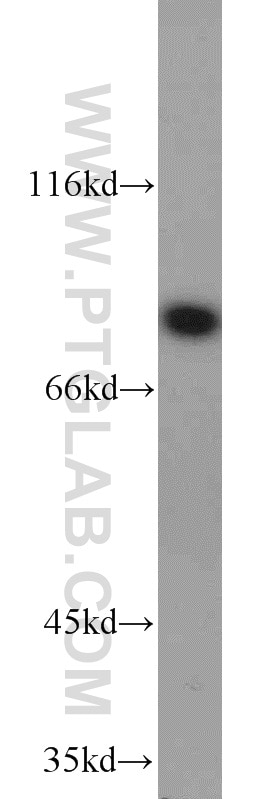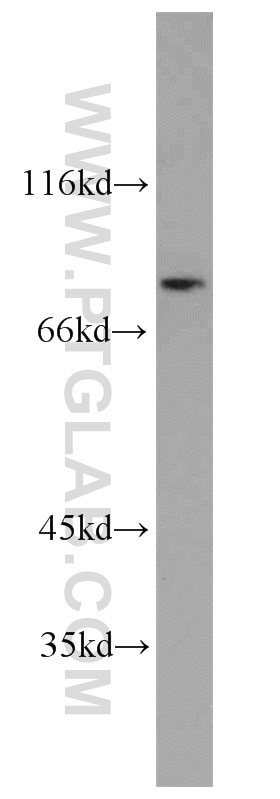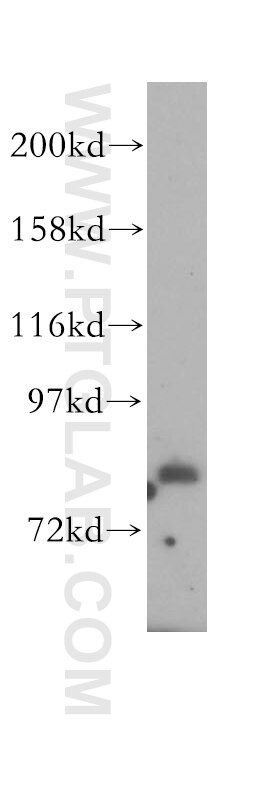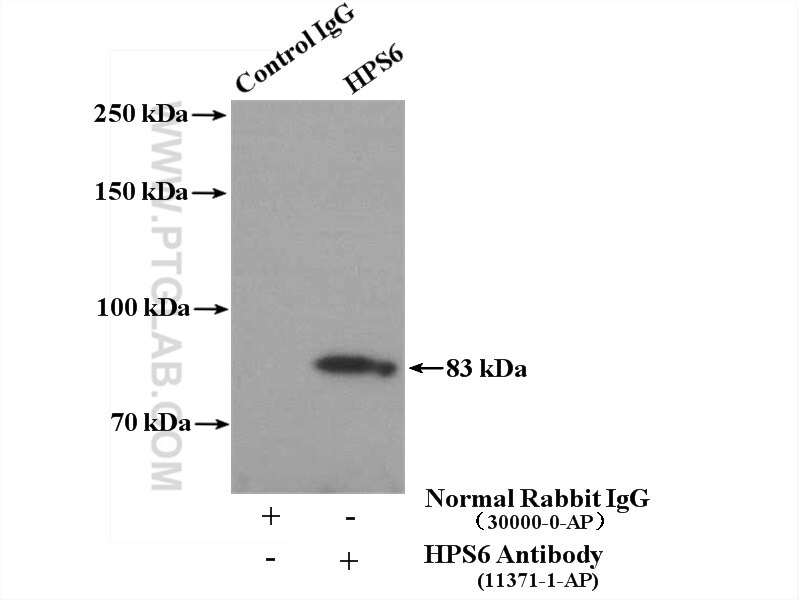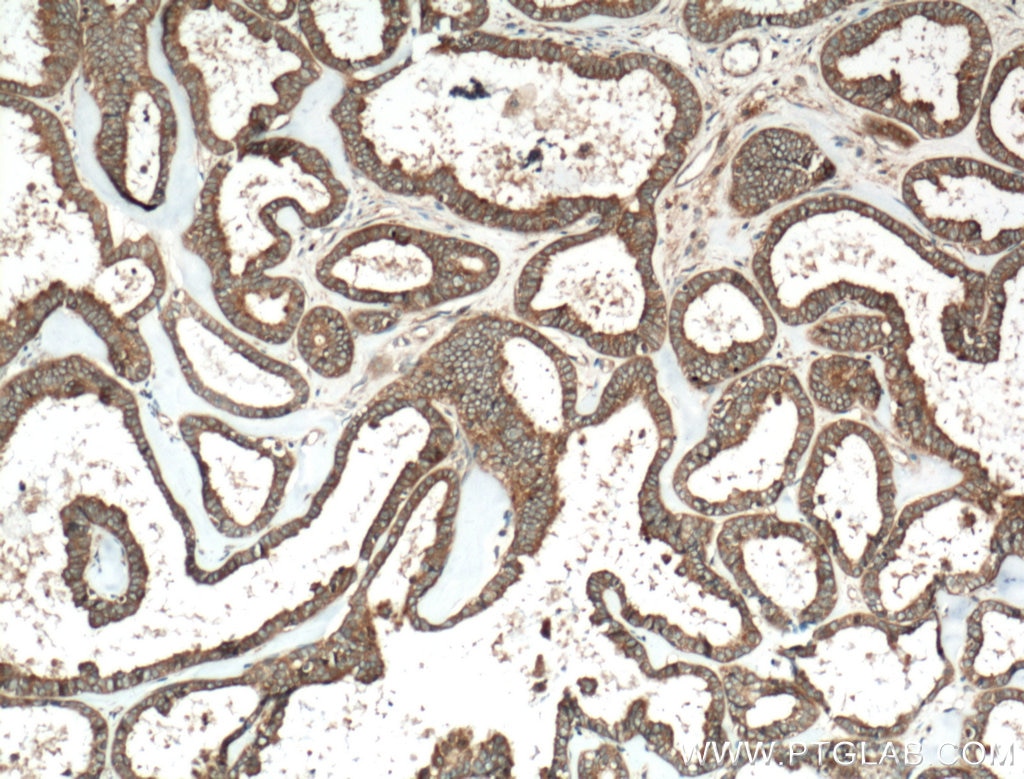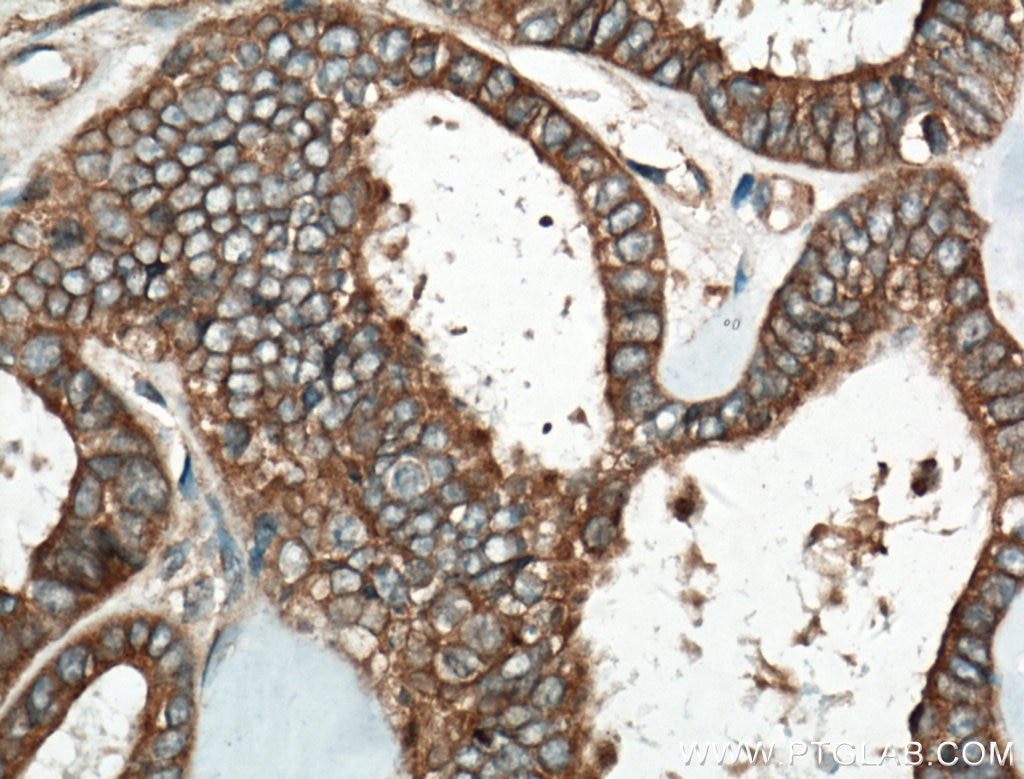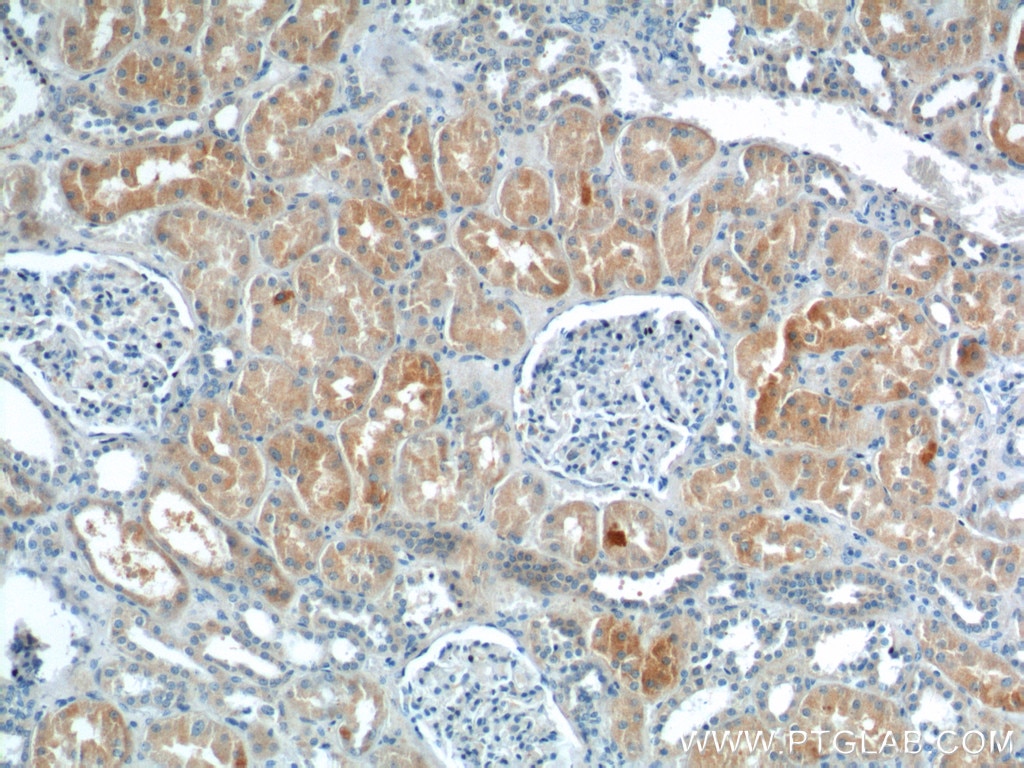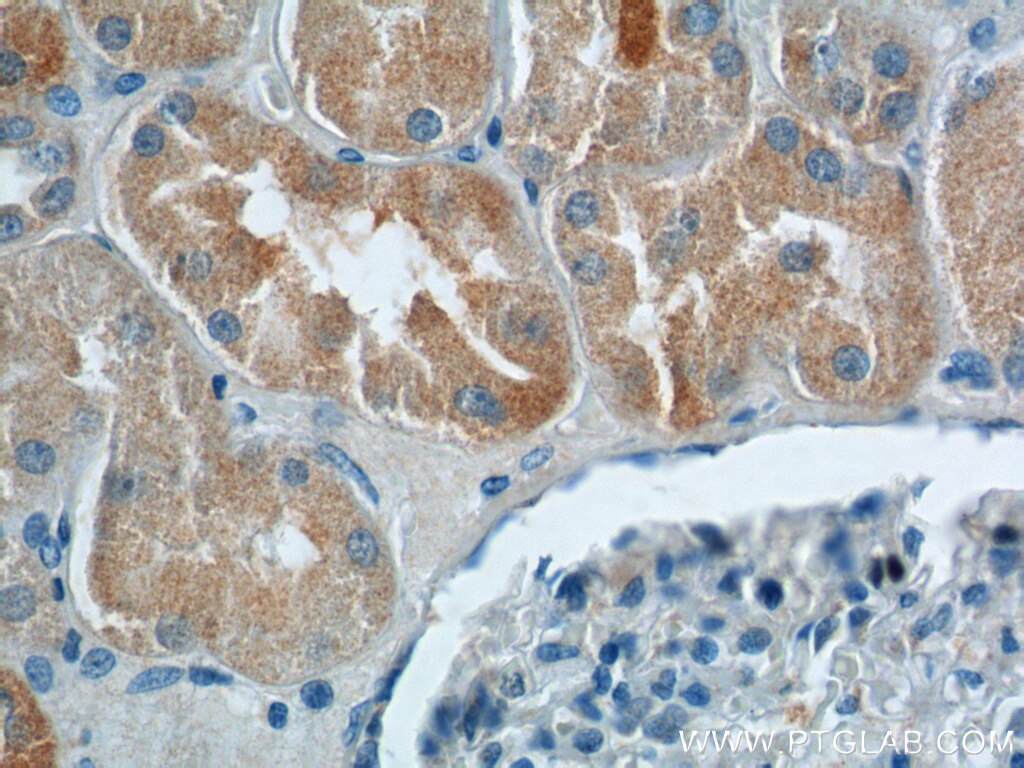- Featured Product
- KD/KO Validated
HPS6 Polyklonaler Antikörper
HPS6 Polyklonal Antikörper für WB, IP, IHC, ELISA
Wirt / Isotyp
Kaninchen / IgG
Getestete Reaktivität
human, Maus, Ratte
Anwendung
WB, IP, IHC, ELISA
Konjugation
Unkonjugiert
Kat-Nr. : 11371-1-AP
Synonyme
Galerie der Validierungsdaten
Geprüfte Anwendungen
| Erfolgreiche Detektion in WB | HeLa-Zellen, HEK-293-Zellen, MCF-7-Zellen |
| Erfolgreiche IP | HeLa-Zellen |
| Erfolgreiche Detektion in IHC | humanes Ovarialkarzinomgewebe, humanes Nierengewebe Hinweis: Antigendemaskierung mit TE-Puffer pH 9,0 empfohlen. (*) Wahlweise kann die Antigendemaskierung auch mit Citratpuffer pH 6,0 erfolgen. |
Empfohlene Verdünnung
| Anwendung | Verdünnung |
|---|---|
| Western Blot (WB) | WB : 1:200-1:1000 |
| Immunpräzipitation (IP) | IP : 0.5-4.0 ug for 1.0-3.0 mg of total protein lysate |
| Immunhistochemie (IHC) | IHC : 1:50-1:500 |
| It is recommended that this reagent should be titrated in each testing system to obtain optimal results. | |
| Sample-dependent, check data in validation data gallery | |
Veröffentlichte Anwendungen
| KD/KO | See 1 publications below |
| WB | See 4 publications below |
Produktinformation
11371-1-AP bindet in WB, IP, IHC, ELISA HPS6 und zeigt Reaktivität mit human, Maus, Ratten
| Getestete Reaktivität | human, Maus, Ratte |
| In Publikationen genannte Reaktivität | human, Maus |
| Wirt / Isotyp | Kaninchen / IgG |
| Klonalität | Polyklonal |
| Typ | Antikörper |
| Immunogen | HPS6 fusion protein Ag1929 |
| Vollständiger Name | Hermansky-Pudlak syndrome 6 |
| Berechnetes Molekulargewicht | 775 aa, 83 kDa |
| Beobachtetes Molekulargewicht | 83 kDa |
| GenBank-Zugangsnummer | BC011594 |
| Gene symbol | HPS6 |
| Gene ID (NCBI) | 79803 |
| Konjugation | Unkonjugiert |
| Form | Liquid |
| Reinigungsmethode | Antigen-Affinitätsreinigung |
| Lagerungspuffer | PBS mit 0.02% Natriumazid und 50% Glycerin pH 7.3. |
| Lagerungsbedingungen | Bei -20°C lagern. Nach dem Versand ein Jahr lang stabil Aliquotieren ist bei -20oC Lagerung nicht notwendig. 20ul Größen enthalten 0,1% BSA. |
Hintergrundinformationen
Hermansky-Pudlak syndrome (HPS) defines a group of at least seven autosomal recessive disorders characterized by albinism and prolonged bleeding due to defects in the lysosome-related organelles, melanosomes and platelet-dense granules, respectively. HSP6, also named as Ru, regulates the synthesis and function of lysosomes and of highly specialized organelles, such as melanosomes and platelet dense granules. It acts as cargo adapter for the dynein-dynactin motor complex to mediate the transport of lysosomes from the cell periphery to the perinuclear region.
Protokolle
| Produktspezifische Protokolle | |
|---|---|
| WB protocol for HPS6 antibody 11371-1-AP | Protokoll herunterladen |
| IHC protocol for HPS6 antibody 11371-1-AP | Protokoll herunterladen |
| IP protocol for HPS6 antibody 11371-1-AP | Protokoll herunterladen |
| Standard-Protokolle | |
|---|---|
| Klicken Sie hier, um unsere Standardprotokolle anzuzeigen |
Publikationen
| Species | Application | Title |
|---|---|---|
Blood vWF maturation and release are controlled by two regulators of Weibel-Palade body biogenesis: exocyst and BLOC-2.
| ||
EMBO Rep Rab22A recruits BLOC-1 and BLOC-2 to promote the biogenesis of recycling endosomes. | ||
Am J Respir Cell Mol Biol Gene-edited MLE-15 Cells as a Model for the Hermansky Pudlak Syndromes. | ||
Adv Sci (Weinh) Evoked Weibel-Palade Body Exocytosis Modifies the Endothelial Cell Surface by Releasing a Substrate-Selective Phosphodiesterase |
